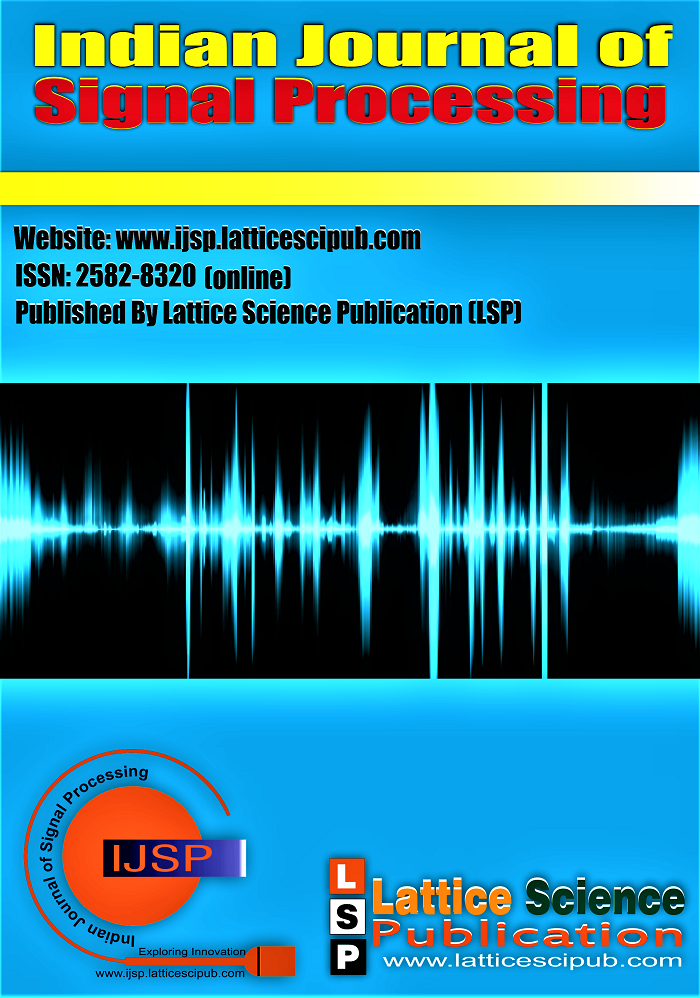Neural Mass Model-Based Different EEG Signal Generation and Analysis in Simulink
Main Article Content
Abstract
The electroencephalogram (EEG) is an electrophysiological monitoring strategy that records the spontaneous electrical movement of the brain coming about from ionic current inside the neurons of the brain. The importance of the EEG signal is mainly the diagnosis of different mental and brain neurodegenerative diseases and different abnormalities like seizure disorder, encephalopathy, dementia, memory problem, sleep disorder, stroke, etc. The EEG signal is very useful for someone in case of a coma to determine the level of brain activity. So, it is very important to study EEG generation and analysis. To reduce the complexity of understanding the pathophysiological mechanism of EEG signal generation and their changes, different simulation-based EEG modeling has been developed which are based on anatomical equivalent data. In this paper, Instead of a detailed model a neural mass model has been used to implement different simulation-based EEG models for EEG signal generation which refers to the simplified and straightforward method. This paper aims to introduce obtained EEG signals of own implementation of the Lopes da Silva model, Jansen-Rit model, and Wendling model in Simulink and to compare characteristic features with real EEG signals and better understanding the EEG abnormalities especially the seizure-like signal pattern.
Downloads
Article Details

This work is licensed under a Creative Commons Attribution-NonCommercial-NoDerivatives 4.0 International License.
How to Cite
References
J. Satheesh Kumar, P. Bhuvaneswari, Analysis of Electroencephalography (EEG) Signals and Its Categorization–A Study, Procedia Engineering, Volume 38, 2012, Pages 2525-2536, ISSN 1877-7058, https://doi.org/10.1016/j.proeng.2012.06.298. [CrossRef]
Jansen, B.H., Rit, V.G. Electroencephalogram and visual evoked potential generation in a mathematical model of coupled cortical columns. Biol. Cybern. 73, 357–366 (1995). https://doi.org/10.1007/BF00199471 [CrossRef]
Al-Nashash, Hasan et al. “EEG signal modeling using adaptive Markov process amplitude.” IEEE transactions on bio-medical engineering vol. 51,5 (2004): 744-51. doi:10.1109/TBME.2004.826602 [CrossRef]
F. Shayegh, R. A. Fattahi, S. Sadri, K. Ansari-Asl, "A Brief Survey of Computational Models of Normal and Epileptic EEG Signals: A Guideline to Model-based Seizure Prediction", Journal of Medical Signals and Sensors, vol. 1, no. 1, pp. 62-72, 2011. [CrossRef]
Zavaglia, Melissa, Filippo Cona, and Mauro Ursino. "A neural mass model to simulate different rhythms in a cortical region." Computational intelligence and neuroscience 2010 (2010). [CrossRef]
Freeman, W J. “Models of the dynamics of neural populations.” Electroencephalography and clinical neurophysiology. Supplement ,34 (1978): 9-18.
Lopes da Silva, F H et al. “Model of brain rhythmic activity. The alpha-rhythm of the thalamus.” Kybernetik vol. 15,1 (1974): 27-37. doi:10.1007/BF00270757. [CrossRef]
Wendling, F et al. “Epileptic fast activity can be explained by a model of impaired GABAergic dendritic inhibition.” The European journal of neuroscience vol. 15,9 (2002): 1499-508. doi:10.1046/j.1460-9568.2002.01985.x. [CrossRef]
Robinson, P A et al. “Prediction of electroencephalographic spectra from neurophysiology.” Physical review. E, Statistical, nonlinear, and soft matter physics vol. 63,2 Pt 1 (2001): 021903. doi:10.1103/PhysRevE.63.021903. [CrossRef]
David, Olivier, and Karl J. Friston. "A neural mass model for MEG/EEG:: coupling and neuronal dynamics." NeuroImage 20.3 (2003): 1743-1755. [CrossRef]
Grimbert, François, and Olivier Faugeras. “Bifurcation analysis of Jansen's neural mass model.” Neural computation vol. 18,12 (2006): 3052-68. doi:10.1162/neco.2006.18.12.3052. [CrossRef]
S. Geng, W. Zhou, Q. Yuan and Z. Ma, "Bifurcation phenomenon of wendling's EEG model," International Symposium on Bioelectronics and Bioinformations 2011, Suzhou, 2011, pp. 111-114, doi: 10.1109/ISBB.2011.6107658. [CrossRef]
E. Dong and Z. Liang, "The multi-frequency EEG rhythms modeling based on two-parameter bifurcation of neural mass model," 2014 IEEE International Conference on Mechatronics and Automation, 2014, pp. 1564-1569, doi: 10.1109/ICMA.2014.6885933. [CrossRef]
Tömböl T. Short neurons and their synaptic relations in the specific thalamic nuclei. Brain Res. 1967 Jan 20;3(4):307-26. doi: 10.1016/0006-8993(67)90095-9. PMID: 4166255. [CrossRef]
W. H. Press, S. A. Teukolsky, W. T. Vetterling, B. P. Flannery, Numerical Recipes in C: the Art of Scientific Computing, Cambridge: Cambridge University Press, 1992, ch. 16.





